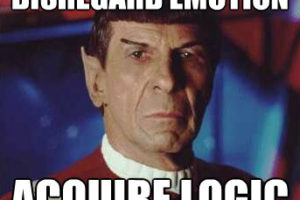Basic Electronics & Circuits Practice Questions
- Posted by Brian Stocker MA
- Date May 20, 2014
- Comments 3 comments
Electronics and Circuits Practice – Load, Circuits, Power Source and Conductors
Electronics questions are often included as part of mechanical aptitude (comprehension) questions. The Elevator Repair Aptitude, as well as mechanical comprehension tests have electronics questions.
The following topics are usually covered: Circuits, Conductors, Short circuits, Open and Closed circuits, Load, Path, Parallel and Series Circuits.

Questions
General Electricity and Circuits
1. What is the difference between alternating and direct current?
a. Direct current reverses direction periodically and alternating current flows in one direction.
b. Alternating current reverses direction and direct current flows in one direction.
c. Both alternating and direct current periodically reverse direction.
d. Both alternating and direct current flow in one direction only.
2. Is residential power AC or DC current?
a. Residential power is AC
b. Residential power is DC
c. Residential power is neither
3. Two wires run to a machine. One wire is 10mm thick, and the other is 5mm. If the two wires are carrying the same current, the larger wire:
a. Requires less voltage
b. Requires more voltage
c. Requires the same voltage
d. It cannot be determined from the information given
4. What is a resistive circuit?
a. A circuit that contains a power source and resistors
b. Any electrical circuit
c. A circuit that contains any combination of capacitors and resistors
d. None of the above
5. An electric circuit is:
a. Conducting material from the load to the power source
b. Conducting material from the power source to the load
c. A loop of conducting material that goes from a power source to the load and back
d. None of the above
6. The load of an electric circuit is:
a. The length of the circuit
b. The amount of power consumed by a circuit
c. The impedance of a circuit
d. None of the above
Open and Closed Circuits
7. Which of the following best describes an open circuit?
a. A circuit with a complete path for current flow
b. A circuit with no gaps or breaks in the current path
c. A circuit that prevents the flow of electricity due to a gap or break
d. A circuit that allows uninterrupted current flow
8. Which of the following statements is true about closed circuits?
a. They have no flow of electrons
b. They have higher resistance due to a break in the current path
c. They require insulators to prevent accidental shorts
d. Devices connected to a closed circuit will not function
Series and Parallel Circuits
9. Which configuration are bulbs generally connected to ensure continuous illumination even if one bulb burns out?
a. Series
b. Parallel
c. Both series and parallel
d. Neither series nor parallel
10. Which configuration is commonly used when connecting batteries to achieve the desired voltage?
a. Series
b. Parallel
c. Either series or parallel
d. Neither series nor parallel
Load
11. What is a circuit called that contains two or more loads but only one path for current to flow?
a. Series
b. Parallel
c. Series-parallel
d. AC
Power Source
12. Which of the following is true about power in a circuit?
a. Power is the rate at which charge flows through a circuit.
b. Power is always equal to the voltage in a circuit.
c. Power is inversely proportional to the resistance in a circuit.
d. Power is measured in ohms (Ω).
Conductors
13. Which of the following items would NOT be part of an electrical circuit?
a. Power source, such as a battery
b. Electrical appliance, such as a light bulb
c. Wires made of gold
d. Wires made of plastic
14. Which of the following materials is commonly used as a conductor in electrical circuits?
a. Glass
b. Rubber
c. Copper
d. Plastic
Answer Key
1. B
In alternating current (AC, also ac), the movement of electric charge periodically reverses direction. In direct current (DC, also dc), the flow of electric charge is only in one direction.
2. A
Residential power is alternating current, AC.
3. A
If the two wires are carrying the same current, the larger wire requires less voltage.
4. A
A resistive circuit only contains a power source and resistors.
5. C
A loop of conducting material that goes from a power source to the load and back.
6. B
The load is the amount of power consumed by a circuit.
Open and Closed Circuits
7. C
An open circuit refers to a circuit that is not complete, meaning it has a gap or break that interrupts the flow of electricity.
8. C They require insulators to prevent accidental shorts
Explanation: Closed circuits require insulators to prevent accidental shorts, which can cause disruptions or hazards in the circuit. Insulators are necessary to ensure the current flows through the intended path.
Series and Parallel Circuits
9. B
Light Bulbs are generally connected in parallel to ensure continuous illumination even if one bulb burns out.
10. A
Batteries are connected in series to give the desired voltage since voltages add up when connected in series.
11. B
A circuit that contains two or more loads but only one path for current to flow is called a parallel circuit. In a parallel circuit, each load has its own separate path for current to flow, but they share the same voltage source. This allows the loads to operate independently, and the total current entering the parallel circuit is divided among the different branches.
Power Source
12. A
Power in a circuit represents the rate at which electrical energy is transferred or consumed. It is not equal to voltage alone but depends on the current flowing through the circuit as well.
Conductors
13. C
Gold wires are not used due to cost. Copper or aluminum wires are more commonly used conductors in circuits. Plastic wires are used for insulation.
14. C
Copper is one of the most commonly used conductors in electrical circuits due to its high conductivity and availability. Glass, rubber, and plastic are insulating materials and do not conduct electricity.
You may also like

Listening Comprehension Practice – Solving a Problem


3 Comments
Very true
Also the thicker a wire the more current it can carry so the answer should be C and the thinner the wire the lesser the current it can carry so if you had said about the thinner one then A would have been correct but since you said about the thicker one C is the answer
The answer is correct from ohm’s law
Question four is a poor representation of the concept of conductor resistance in a circuit. If the current present is low, then either conductor will require the same voltage. It is only when the capacity of the conductor to carry the current is significantly utilized that the difference in voltage could be measured. Otherwise the difference is only theoretical.